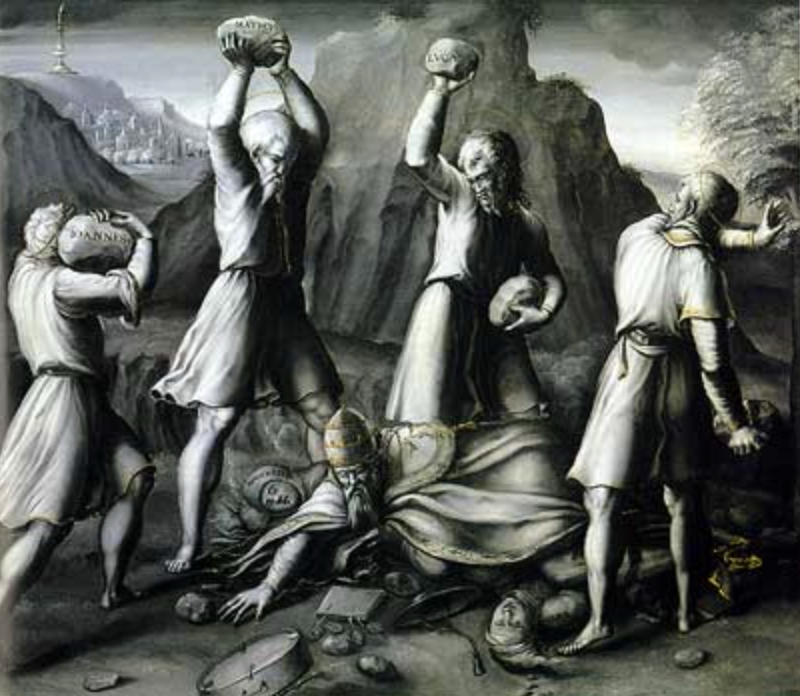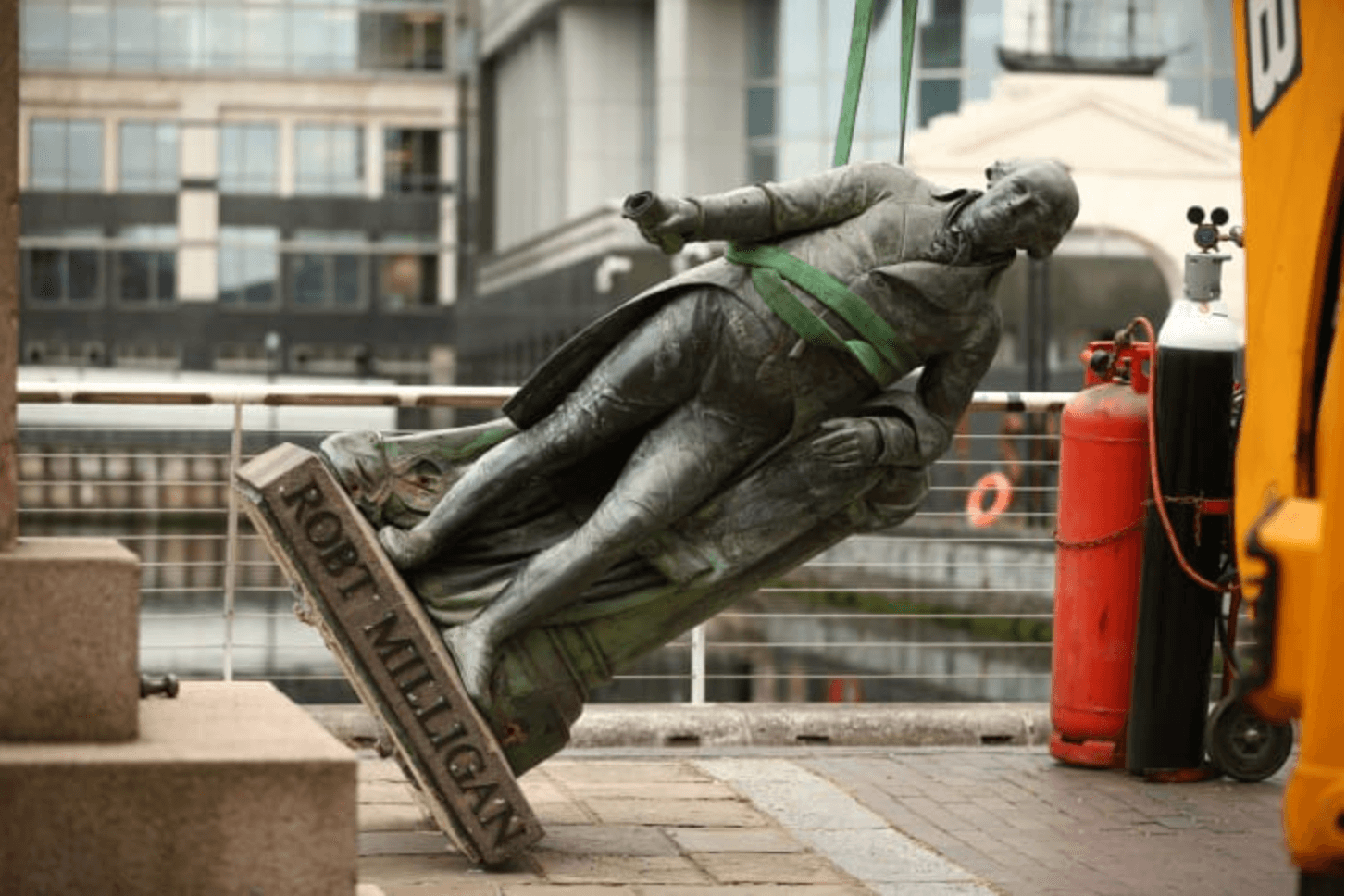Cancel Culture and the New Puritans
Wednesday, 20 April 2022
| David Griffin
J. K. Rowling, the famous author of the Harry Potter books, has been cancelled from a twenty-year anniversary of her first Harry Potter book. Even some of the movie’s stars have cancelled her. Recently Monty Python’s John Cleese blacklisted himself from Cambridge University, saying he wanted to get in first before others blacklisted him.
Cancel culture is not new. What is new is its targets and methods. Political establishments like old monarchies, which were governed by autocrats ruled by decree, cancelled their opponents by slaughter or exile. Cultural establishments on the other hand are more subtle. They cancel their opponents’ non-compliant speech and behaviour by giving them the silent treatment. In practice this means that the press refuses to give them fair coverage, or any at all, and that cultural elites ban them from attending events. Perhaps the most notorious example of cancellation is Stalin’s erasure of Trotsky from a grainy old black and white photo of Lenin giving a speech in 1919. Trotsky opposed Stalin. He was subsequently expelled from the party, expunged from Soviet history and finally assassinated in Mexico in 1940. Stalin’s reach was indeed long. Dissent is often the domain of the brave.

Cancellation has long practiced iconoclasm. Even though iconoclasm is often used in a religious sense, it possesses broader cultural significance and came to a new and virulent expression last year in the BLM riots. Broadly speaking, iconoclasm is the wilful destruction of icons, and icons is used here to include any signs or symbols that deserve respect due to their political, moral or theological significance.
Let me mention four historical cancellations that all had or have iconoclastic elements. The first was the iconoclasm that accompanied the dissolution and suppression of the monasteries in England under King Henry VIII from 1536 to 1541. The Great Iconoclasm of continental Europe also occurred around this time. This English iconoclasm was a fiercely Protestant movement aimed at tearing down the continuing influence of the Roman Catholic Church.

The second was the French Revolution in the 1790s that destroyed both Catholic and monarchist symbols. About 140 years later, and in a similar vein, the Soviet destruction of the churches during the twentieth century commenced. Both were secular political movements, and both were virulently anti-theological.
Jumping to our current century was the Taliban’s destruction of the Buddhist statues of Bamiyan in 2001. A leading Muslim cleric declared that the statues were idols and thus worthy of destruction. A pure Islamic state would appear to require such annihilation. This was theologically motivated.
Finally, we come to last year’s BLM protests that toppled statues of perceived racists, not only in the USA but also in the UK. An example of the irrationality of such destructive iconoclasm comes from the UK experience. A young black community activist in England was asked if Churchill was racist and, if so, whether his statue should be pulled down. She replied that she did not know because she had not met him! That Churchill was being discussed as racist despite fighting so vigorously against the most racist ideology on earth is instructive. Perhaps the Jews do not matter to BLM. As a Marxist organisation, BLM certainly does exhibit elements of anti-Semitism, seen by some BLM riots moving into American Jewish neighbourhoods for their looting spree. Anti-Semitism now resides in the far left rather than the far right, and led the British Jews to accuse Jeremey Corbyn of being an enabler of anti-Semitism within the British Labour Party. An English rabbi urged his congregation to vote against Labour because Corbyn posed ‘a danger to Jewish life as we know it’.

What is common to all these movements is the desire to purify the state and culture from symbols that would appear, at least to those concerned, not only to represent but also to celebrate idolatrous, blasphemous and evil persons or ideas. They are essentially puritan movements, anti-Semitism included.
Puritanism is a deeply ambiguous concept. To be accused of being puritanical is to be shamed as a narrow-minded bigot, a member of the fun police whose fundamental fear is that someone, somewhere, might be enjoying themselves. But then, all societies exhibit puritan elements. Jails are puritan institutions where people who are deemed evil are separated from the innocent and are punished, in the hope of rehabilitation. Jails are diluted secular versions of divine punishment, the mortification of sin and the personal renewal of mind. A fresh start is hoped for, and parole boards look kindly upon remorse as a type of sorrow for sin. De-radicalisation programs seek a form repentance and vigorous change of mind (metanoia, repentance), a turning from political ‘sin.’
The term puritanism however is generally derived from the English Puritans. Initially the Puritans were those Church of England clergy and laity of the late 1500s-1600s who sought to purify the church and the nation from what they perceived to be lingering Roman Catholic influence. Those Puritans who could not tolerate such compromises became the Dissenters and Separatists and departed to create other churches, such as my own Baptists.
**The English puritans wanted to purify three things. First, they wanted to purify the church of those elements of its character that they thought remained Catholic, such as its three-fold episcopal ministry, elements of the Prayer Book, and certain aspects of corporate worship. Despite the church’s mix of Lutheran and Calvinist theology, its ritual remained cloaked in Roman external form, and many Puritans wanted a full reformation ‘without tarrying for any’. Second, they wanted to purify the nation, which was one part of the turbulent mix that led to the beheading of Charles 1 (1649) and the establishment of the short-lived commonwealth republic under lord protector Oliver Cromwell (1653-1658). Finally, they sought an internal purification of the heart. This is amply evident in the many Puritan spiritual manuals and prayers that have a strong focus on indwelling sin and the need for its mortification and cleansing by the Spirit. Many Puritan writers were masters at dissecting the internal machinations of the soul, and this occasionally led to a degree of inward melancholy. Nonetheless their psychological analyses are deeply perceptive and predate modern clinical psychology by centuries. A key difference is that Puritan analysis is morally and theologically weighted with God’s love and holiness, rather than being antiseptically non-judgmental.
Such a focus on soul cleansing via confession has recently emerged in a non-theological form by celebrities posting selfie video-clips admitting to their own white privilege and complicity in systemic racism. Such virtue signalling has some parallels with some of the crazier forms of Pentecostal boasting about hyper-spiritual experiences. While the celebrities confess and the preachers boast, they are both actively demonstrating their ethical or spiritual virtues in order to gain fame, endorsements and, may I say it, money. It is crass virtue signalling.
So the riotous BLM destruction and iconoclasm, estimated to have caused US$1-2 billion in property damage and 26 deaths, stands in a long puritan tradition. But unlike the English Christian puritans, there has been very little, if any, inward reflection. There appears, to me at least, no acknowledgement that the hearts of the rioters and activists are in need purification like all others’. What they need to be purified from, however, is resentment and envy. All the purifying anger was turned outward, to the extent that white people are now being encouraged to repent of their whiteness. And liberal minded white celebrities do just that, in grovelling displays of fictional self-loathing. Yet there would appear to be a deep divide here, for sin is apportioned to only one class based on skin colour. So a middle teenage Asian complained to me about a student in her school who accused everyone of racism except himself. Even she was guilty of white privilege, despite not being white. So whiteness has become a metaphor for oppression and evil beyond its literal meaning. Or perhaps it simply means anyone not black, or anyone who has done well in life. These modern puritans are good at taking aim at others, but refuse to gaze at any moral mirror.
Such blindness is a characteristic of puritanism. The early Puritans, while serious about sin, had deep recesses of moral short-sightedness. They did not always heed Jesus’ warning about the speck in another’s eye and the log in our own. So they are often properly accused of hypocrisy, which is precisely the accusation that conservative commentators make today about progressive virtue signalling, many times rightly. For instance, how can previous USA Presidential candidate Bernie Sanders, perhaps the US’s best known self-identifying socialist who rails against the rich, be taken seriously when he has acquired three houses, the last one worth over US$500,000? Or when one of the founders of BLM owns four houses, one being in a type of gated estate in an up-market white neighbourhood?
Revolutionaries quite often end up eating their own. Perhaps that is due to the idealisation of their own virtue, or the driven nature of their passionate moral certitude. Such attitudes readily lead to the cancellation of opponents. Puritans tend to recoil at the idea of compromise, even when it is good and necessary. This is one reason why the idealised and driven often have broken relationships, including broken marriages. Their wedding vows become a causality of their passions being more primarily wedded to their own view of the world, or to their opinions, or to their virtues.
Cancel culture and its attendant iconoclasm will not disappear. It may moderate, and it will certainly shift its ground. What is holy in one era becomes profane the next. Fifty years ago, Christmas Day, Good Friday and Easter Day were holy. Today they are profane. The holy day is now Anzac Day. The holy order of clergy is now profane, replaced with the holy and un-criticisable orders of the alphabet soup, returned soldiers and perhaps baristas. The concepts of the holy and profane remain alive, yet constantly shift in content. And the shift is generated by a cultural establishment that holds the powers of influence in education, media, business, politics and the higher levels of the public service.
So, if like me you have sympathy with early English Puritanism (and there is no reason to be ashamed of it if you are), ensure that your focus is correct. The envy, resentment, and rage of secular puritanism however does not belong in God’s church. Human anger does not bring about God’s righteous purposes. If you do want to purify the church or society (and doing so for God is a good thing), please purify yourself first. It is easy to march, shout, rage and tear down. Too many puritanical Christians tear down their pastors: I know from experience. Protesting and rage can make people feel good for a short time and may even receive congratulatory pats on the back. But it is usually just destructive. It is far harder to purify our own life, to cancel our own sin and to tear down the idols in our own heart. It is the pure in heart who see God.
David Griffin is a Baptist Pastor enjoying retirement at Vincentia, Jervis Bay, NSW. His interests include social philosophy, ethics and the Bible.
Postscript: You can read a response to this article by Joanna Cruickshank here and the editorial response from Ethos Director Gordon Preece to both articles here.
Photo credits:
Erasure of Trotsky from photo of Lenin speaking. Source: https://rarehistoricalphotos.com/stalin-photo-manipulation-1922-1953/.
Allegory of the four Evangelists stoning the Pope, painted for Henry VIII by Girolamo da Treviso c. 1542. Source: https://mma.pages.tufts.edu/fah188/kpetersen/churchofengland.html.
Removal of statue of Scottish slave-owner Robert Milligan from east London. Credit: Yui Mok/PA Images/Getty Images. Source: https://edition.cnn.com/style/article/uk-statues-protest-movement-scli-intl-gbr/index.html.
This article first appeared in the Autumn 2022 issue of Equip magazine on ‘Beyond Nostalgia: Encompassing change after Covid-19’. You can subscribe to Equip here.